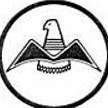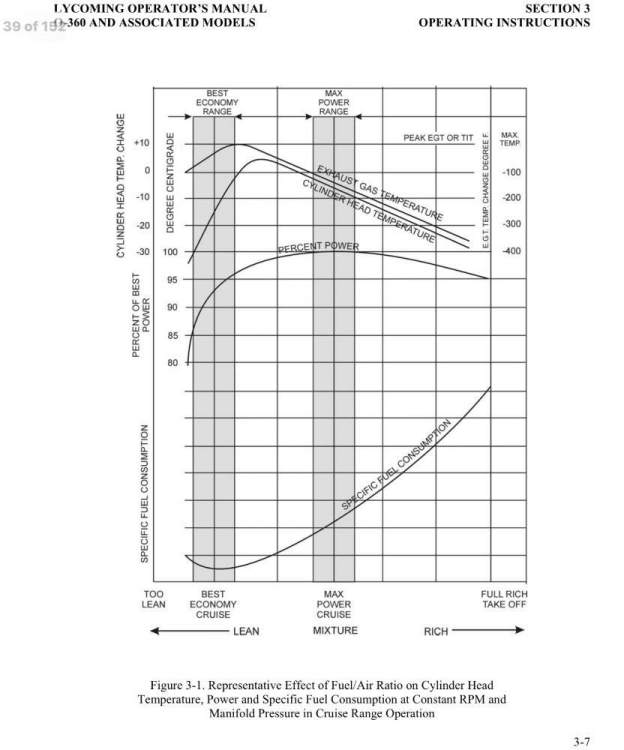-
Posts
11,904 -
Joined
-
Last visited
-
Days Won
163
Content Type
Profiles
Forums
Blogs
Gallery
Downloads
Media Demo
Events
Everything posted by Shadrach
-

Anybody want to help me change a tire in Manassas?
Shadrach replied to wombat's topic in General Mooney Talk
I am 90% sure my current nose wheel tube has a straight stem. The Lasar wheel covers fit fine. The challenge is that some air chucks are too large for the clearance between the stem and the axel housing. -
Close to standard, DA was 300’ below field elevation when we departed.
-

Would I be happy with a later 'E model? (68-70)
Shadrach replied to BloodRedSkies's topic in Vintage Mooneys (pre-J models)
Negative. The number in question was the fuel burn! -

Would I be happy with a later 'E model? (68-70)
Shadrach replied to BloodRedSkies's topic in Vintage Mooneys (pre-J models)
It’s a fine airplane that I am sure will do 180kts and also burn 12-13gph. I’m skeptical tat it will do both at the same time. -
My hangar neighbors bought a brand new Bravo for their owner flown flight dept. It complimented their two Conquest IIs and Seneca III for flights of one or two people. One of them told me the Bravo was a runway hog and that they limited it to 3500’ minimum. I asked him about approach speeds and understood the limitation. They used 90kts for short final. They were probably more than 1.4Vso ( for MGW) going into the flare. They were all Flight Safety trained. I don’t think they received good Mooney transition training, but what the hell am I going to say to a bunch of Comm/ATP rated pros that go to Flight Safety twice a year. I found out later that one of them pranged the prop in the first 10hrs but it never did slow them down. .
-
Book landing roll for an M20C at max gross weight is about 600ft. A good instructor should be able to have him quite comfortable with 2700ft in several hours. One should certainly have personal minimums. On the other hand, one should also strive to be comfortable operating their aircraft well within its performance envelope. The NTSB stats show that too many Mooney owners avoid developing proficiency at spot landing and short field work (2700 is not really a short strip for a C). The strip in question is narrow at 25’ but the main gear span is <10’.
-
That’s plenty of runway. I’ve seen a C model based out of an 1800’ strip with a steep decline on one end. The plane is perfectly capable of operating there. With practice, the pilot can be made just as capable. I’d have no qualms about basing my F out of such a strip. What is the closest bailout with an instrument approach?
-
Not a thing. However if there is very detailed data available at no charge, why not utilize it? I was skeptical of my original calculation. Turns out, the problem was me and my failure to properly transfer the ADSB data to a spread sheet.
-
Might be. However lower altitude climb was a leisurely cruise climb so not very telling. MAPAs Evaluation numbers to 10,000 were 702fpm single pilot with full tanks, so similar weights but different conditions. I need to do a few max performance time to climb over different conditions but at the same weight to derive meaningful data.
-
So, I found an error in my spread sheet. The new calculation is a much more reasonable 752fpm. 11,850 in 946 secs. I only posted the graph because an image of the raw data with time signatures was too large to capture in a practical way. I used the two data points below to calculate time to climb. Time (EDT) Latitude Longitude Course kts feet Rate Wed 10:48:05AM 39.6979 77.7303 ↓188° 77 1,100 935 Wed 11:03:51AM 39.6792 77.9094 → 83° 138 12,950 566
-
Roughness is entirely dependent on available MP. There are many scenarios where enrichening to smooth would leave my engine well lean of best BSFC.
-
Yes my point was that CHTs are not necessarily a good indicator. As for EGTs, my full rich takeoff EGTs are high 1100s to low 1200s. Cruise in the mid 1400 to high 1300s. That sometime yields CHTs in the 270 range on #1 and #4. Borescope shows clean and happy cylinders with minimal deposits. No morning sickness issues in 1000s of hours of operation.
-
I run CHTs under 300 all winter, no issues with lead scavenging nor deposits. Comps last annual were 80/80, 80/80, 80/80, 79/80.
-

Anybody want to help me change a tire in Manassas?
Shadrach replied to wombat's topic in General Mooney Talk
@wombat I have a new Michelin Airstop for the nose gear. Never been installed but I don’t know how old it is. DM me your cell. -
14.9 for 8.5 C/R. 15.1 for 8.7 C/R (Lyc IO360) the difference is splitting hairs but the higher compression engine is a touch more thermally efficient.
-
The lowest and flattest part of the BSFC curve (read most efficient) starts right around peak EGT and continues to about 25° before efficiency starts to decrease again (Lycoming graph below). I have been using the lean side of the mixture spectrum for nearly 20year. It’s come to be my opinion that most Lycoming IO360s will run quite a bit leaner than needed. I normally try to run what I will call “Best LOP power”. That means that I run my RICHEST cylinder as close to peak EGT as prudent with consideration to CHTs and OAT/DA. The other three cylinders will be somewhat further LOP. Consideration to OAT/DA means a CHT that’s acceptable on a 90° summer day might not be acceptable on a 15° winter day. I run my engine leanest (maybe 40°) at high power settings when at lower altitudes on cold, low DA days. In winter, DAs can be around SL at 3500msl where I live. As my operating DA goes up, the mixture gets richer. At DAs of ~6k and above, peak is usually sufficient to keep CHT’s in the desired range. I try to keep CHTS between 300-350° In level flight, 300° is challenging in the winter time for #1 and #4. Under 70% power, there almost no operational benefit to running leaner than peak unless the engine is running warmer than desired. Ignition timing does have some effect on LOP ops. IO360s can be timed at 20° or 25°. This makes for a small but noticeable difference in how the engine operates throughout the mixture spectrum. So after all of the above, the answer is, it depends. However, I think many run leaner than necessary out of fear or misunderstanding.
-

Would I be happy with a later 'E model? (68-70)
Shadrach replied to BloodRedSkies's topic in Vintage Mooneys (pre-J models)
In flight handling is the pretty much the same. Weight is the single biggest factor affecting handling at pattern speeds. The difference in empty weight between the lightest C and the heaviest K is likely in excess of 400lbs. So yes, speeds will be different as will feel. -

Would I be happy with a later 'E model? (68-70)
Shadrach replied to BloodRedSkies's topic in Vintage Mooneys (pre-J models)
Any of the 4 place Mooneys fit your mission. Block times on trips under 600 nautical miles are not going to be drastically different. Find a plane that has the best combination of equipment/value and have a thorough prebuy performed. If you have no use for the oxygen altitudes, you really have no use for a turbo. It will simply cost more to maintain and provide you almost nothing in the way of additional performance until you get above 8k. I took off behind a beautiful K model last Wednesday. I thought my eyes were deceiving me as he grew in the windshield. Then I got a collision alert from the tower about 30 secs later. It was a hot day, his plane is heavier, probably had the power pulled back for temps. Nevertheless, I’m sure he didn’t like hearing that the stock, guppy mouth F that he blocked from making a VFR departure while he awaited his IFR clearance was now flying right up his backside. That being said, I think the k model, particularly the Encore probably yielded about the best combination of performance, payload and efficiency of any GA single ever made, but if you don’t need one, you don’t need one. -
Thanks for the link. I was cruise climbing into the wind. It was not a max climb performance effort which gave me all the more reason to question the number.
-
It was a butter smooth day even under the broken deck, so that and perhaps some gentle updrafts off the western ridges may have contributed to what I thought was an overly ambitious number for the temp and pressure.
-
Does anyone have any insight as to what degree free ADS-B Data can be trusted for performance analysis? On a recent flight we elected to takeoff and do a cruise climb (~110mph) to 13,500MSL. I thought I'd take the opportunity to analyze real world climb performance as we're planning a Coast to Coast trip next summer. Both flightaware and ADS-B showed that we climbed from a pressure altitude of 1100' to 12,950' for an 11,850' gain in 12mins and 46 secs. That works out to 928fpm 752fpm. I am trying to derive some real data in which I can be confident. DA was a few hundred feet below standard. We had about 600lbs of people and fuel (~450 under gross). I am not confident in the data. What am I missing in regards to the limitations of using these tools to derive performance real world performance data? EDIT: Turns out the data was not the problem. My spreadsheet entries were. New number is a still surprising but more believable 752fpm.
-
A statement no doubt well considered and formulated to avoid liability. So then the only way to truly CYA is to call a briefer and ensure your voice and N number are captured on a recorded line receiving information as soon as practicable prior to departure. it’s like having spreadsheet software that does not necessarily generate accurate values. So it’s merely there as a tool to be used in conjunction with a paper and pencil.
-

Cylinder peaks way behind others
Shadrach replied to lithium366's topic in Vintage Mooneys (pre-J models)
I guess that means we need to define perfect… just running smoothly is a pretty low bar. I wonder what his mixture setting is during the in flight check? Is #4 crossing into 1700° territory during a best power mag check? Will it run smoothly on one mag at 25° LOP? -

Cylinder peaks way behind others
Shadrach replied to lithium366's topic in Vintage Mooneys (pre-J models)
I agree. I’d also like to know the raw EGT number from full rich to peak EGT. It might be useful to know how rich of peak it’s running with the mixtures balls to the wall. I think it’s good practice to do methodical in flight mag checks on a regular basis. I usually check each cylinder individually. Takes about a minute from start to finish.







.jpg.04359759281922196bafc9117b4b2595.jpg)